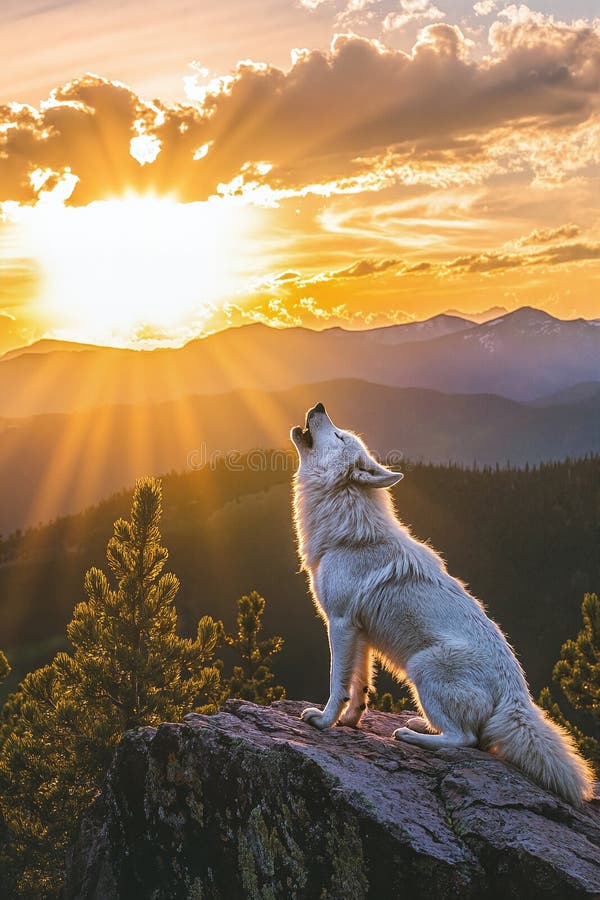Is Wolf Mountain in Nantong the Best Kept Secret in China?

An Essential Guide to Visiting Wolf Mountain
Nestled in the picturesque landscapes of Nantong, China, Wolf Mountain (狼山) offers travelers a unique blend of natural beauty and historical intrigue. What sets this destination apart is not just its stunning views from the summit but the ancient Zhiyun Pagoda, a relic from the Yang dynasty that stands sentinel over the hill. Built in 669 AD, this lesser-known gem invites you to climb its gentle stairways, where each step unveils breathtaking panoramas of the Yangtze River and the surrounding cityscape.
In this essential guide, we will delve into the must-see highlights of Wolf Mountain, including tips for making the most out of your visit. We’ll cover the best times to go, the various trails available for hikers of all levels, and the rich history that permeates the site. Additionally, you’ll discover nearby attractions and dining options to enhance your experience. Whether you’re a nature lover, a history buff, or simply seeking a peaceful retreat, Wolf Mountain promises a rewarding adventure that will stay with you long after the journey ends.
In This Guide
- An Essential Guide to Visiting Wolf Mountain
- The Rich History and Legends of Wolf Mountain
- Main Highlights: What You Absolutely Can’t Miss
- Planning Your Visit: A Practical Guide
- Tickets: Prices, Booking, and Tips
- How to Get There: A Complete Transportation Guide
- Local Cuisine and Accommodation Nearby
- Frequently Asked Questions
- Final Thoughts on Your Trip
The Rich History and Legends of Wolf Mountain
An Enigmatic Journey Through Time
Nestled in the heart of Nantong, China, Wolf Mountain, known as Langshan (狼山), is not just a natural wonder but a monument steeped in rich history and captivating legends. This ancient site has been a silent witness to the ebb and flow of time, serving as a celestial retreat for pilgrims, scholars, and nature lovers alike.
The Origins of Wolf Mountain
Wolf Mountain’s history can be traced back to the Yang Dynasty (around 669 AD), when the Zhiyun Pagoda was constructed. This pagoda, while not as grand as some of China’s more famous temples, is a fine example of Buddhist architecture from an era when Buddhism was flourishing in the region. The pagoda stands at the summit of the mountain, offering breathtaking views that stretch over the Yangtze River and the surrounding city, solidifying its place as a must-visit landmark for those seeking both beauty and tranquility.
The Cultural Revolution and the Clever Abbot
One of the most intriguing tales associated with Wolf Mountain revolves around the Cultural Revolution in China. Legend has it that the pagoda’s survival during this tumultuous time can be attributed to its astute abbot. To shield the sacred site from destruction, he cleverly inscribed slogans that glorified the reign of Chairman Mao—an act that ultimately preserved the monument from the youth brigades intent on erasing remnants of the past. This clever maneuver allowed visitors to continue enjoying the historical significance of the pagoda, making it a symbol of resilience and ingenuity.
Architectural Marvels and Scenic Wonders
As visitors ascend the gentle stairways leading to the pagoda, they encounter various monuments and shrines dedicated to historical figures, each telling a story of its own. The path is lined with resting spots, allowing weary travelers to pause and appreciate the serene surroundings. With a height of about 107 meters, the climb is not daunting, making it accessible for families and casual hikers. The summit rewards those who venture up with panoramic vistas that capture the essence of Nantong’s landscape.
Legends of the Mountain
Beyond its architectural significance, Wolf Mountain is woven into local folklore. The name itself invokes the image of wolves, but the mountain is more a sanctuary for spiritual seekers than a habitat for these elusive creatures. One popular legend tells of a wolf spirit that roams the mountain at dusk, guiding lost souls to safety. Locals believe that those who encounter the spirit will be blessed with good fortune and enlightenment. This enchanting narrative adds an air of mystery to the mountain, drawing both tourists and spiritual seekers alike.
A Sanctuary for All
Today, Wolf Mountain is recognized as a Travelers’ Choice destination on platforms like TripAdvisor, consistently earning rave reviews from international travelers. Visitors can expect not just a historical exploration but also an opportunity to immerse themselves in the natural beauty that the mountain and its surrounding park offer. Whether it be a leisurely stroll through the lush landscapes or a contemplative visit to the ancient pagoda, Wolf Mountain is a testament to the enduring nature of history and legend.
In conclusion, a visit to Wolf Mountain is not merely a hike; it is a journey through time, where every step echoes with the stories of those who came before. From its ancient pagoda to the legends of wolves that protect the mountain, this enchanting destination beckons travelers from around the world to experience its rich heritage and breathtaking views.

Wolf Mountain.
Main Highlights: What You Absolutely Can’t Miss
1. Zhiyun Pagoda: A Timeless Treasure
Perched atop the scenic Langshan Hill, the Zhiyun Pagoda is a must-visit relic dating back to the Yang Dynasty in 669 AD. This ancient structure, although not as grand as some of its counterparts in China, offers breathtaking panoramic views of the Yangtze River and the surrounding cityscape. The climb to the pagoda is manageable, with well-maintained stairways and plenty of resting spots along the way. Make sure to catch the sunset from here for an unforgettable experience!
Tip: Visit during the early morning or late afternoon for cooler temperatures and stunning lighting for photography.
2. Scenic Hiking Trails: Nature’s Embrace
Wolf Mountain is a haven for nature lovers, featuring easy hiking trails that wind through lush greenery. Enjoy a leisurely walk or a more vigorous hike, with well-marked paths that cater to all fitness levels. The trails are adorned with various historic monuments and shrines, adding a cultural touch to your outdoor adventure.
Tip: Wear comfortable shoes and bring water along, especially if you’re hiking during the warmer months.
3. Cultural Monuments: A Glimpse into History
As you ascend the hill, you’ll encounter several cultural monuments dedicated to significant historical figures. Each stop offers a unique insight into the rich history of the area and the stories that have shaped it. These sites are perfect for those interested in photography and history, making for great educational moments amidst your explorations.
Tip: Consider hiring a local guide to provide deeper insights into the historical significance of each monument.
4. Relaxation Spots: Nature and Reflection
Wolf Mountain boasts several tranquil areas where visitors can take a break and soak in the natural beauty around them. These relaxation spots feature benches and shaded areas, perfect for picnicking or simply enjoying the serene surroundings.
Tip: Bring a packed lunch and enjoy a peaceful meal while surrounded by nature.
5. Local Eateries: A Taste of Nantong
After hiking and exploring, refuel at one of the nearby eateries that offer local delicacies. Whether you’re craving traditional Chinese cuisine or a quick snack, you’ll find options to satisfy your appetite. Look for places that specialize in regional dishes to truly immerse yourself in the local culture.
Tip: Try the local specialty dishes, and don’t hesitate to ask the staff for recommendations!
6. Seasonal Beauty: A Changing Canvas
Each season transforms Wolf Mountain into a different canvas of beauty. In spring, cherry blossoms bloom; summer brings vibrant greenery; autumn showcases fiery foliage; and winter presents a serene, frosted landscape. The changing scenery makes each visit unique and is a fantastic opportunity for photography enthusiasts.
Tip: Check the seasonal highlights before your visit to plan your trip around the best times for scenery and activities.
7. Sunset Views: A Magical Experience
One of the most enchanting experiences at Wolf Mountain is witnessing the sunset from the higher vantage points. The sky transforms into a breathtaking palette of colors, providing a perfect backdrop against the pagoda and hills. It’s a moment of tranquility that should not be missed.
Tip: Arrive at least 30 minutes before sunset to secure a good viewing spot and enjoy the gradual changes in light.
Visiting Wolf Mountain is more than just a hike; it’s an immersive experience in history, culture, and natural beauty. Don’t forget your camera, and prepare to create lasting memories in this picturesque setting!

Wolf Mountain.
Planning Your Visit: A Practical Guide
Best Time to Visit
Wolf Mountain (Langshan) is a year-round destination, but the best time to visit is during the spring (March to May) and autumn (September to November). During these seasons, the weather is mild, making it ideal for hiking and exploring the scenic views. Summer can be quite hot and humid, while winter temperatures may drop significantly, although the park remains accessible. Aim for a clear day to fully enjoy the breathtaking views from the top, particularly at sunrise or sunset.
Recommended Itinerary
Morning:
– Arrive at Wolf Mountain early to beat the crowds. The park opens at 8:30 AM.
– Start your visit with a leisurely walk up the gentle stairways towards Zhiyun Pagoda. Take your time to appreciate the historical monuments along the way.
Midday:
– Upon reaching the top, enjoy the panoramic views of the Yangtze River and the surrounding cityscape. This is a perfect time for some photography.
– Find a nearby seating area to relax and have a packed lunch or snack while soaking in the scenery.
Afternoon:
– Explore the lower trails of the park. There are several smaller shrines and historical markers that provide insight into the area’s rich past.
– If time allows, visit local eateries for a taste of Nantong cuisine before concluding your trip.
Photography Tips
- Golden Hour: Early morning or late afternoon provides the best lighting for stunning photographs. The soft light enhances the natural colors and textures of the landscape.
- Wide-Angle Lens: Bring a wide-angle lens to capture the expansive views from the top. The Yangtze River and city skyline make for fantastic sweeping shots.
- Details Matter: Don’t forget to photograph the intricate details of the Zhiyun Pagoda and the various monuments along the trail. Close-up shots of architectural features and artifacts can tell a compelling story.
- People in Nature: Capture candid moments of fellow travelers enjoying the views. This adds a personal touch to your travel album.
What to Wear
- Comfortable Shoes: The climb is manageable, but sturdy, comfortable walking shoes are essential for navigating the stairways and trails.
- Weather-Appropriate Attire: Dress in layers, especially in spring and autumn when temperatures can fluctuate. A light jacket may be needed in the mornings and evenings.
- Sun Protection: Don’t forget your sunscreen, a hat, and sunglasses, especially during summer months when the sun can be intense.
- Backpack Essentials: Carry a small backpack with water, snacks, and a camera to ensure you’re prepared for a full day of exploration.
Insider Tips
-
Plan for Rest Stops: The stairways are equipped with benches and resting areas. Take advantage of these to enjoy the view and catch your breath during the ascent.
-
Explore Beyond the Pagoda: While the Zhiyun Pagoda is a highlight, explore the surrounding trails and lesser-known shrines. These spots often provide quieter moments and unique photo opportunities.
-
Cultural Etiquette: Be respectful when visiting the temples and historical sites. Quietness is appreciated, and it’s a good idea to avoid loud conversations, especially in sacred areas.
-
Visit Local Markets: If time permits, head to nearby local markets post-visit to experience Nantong’s culture and try some authentic local dishes, such as the famous Nantong Nankeen fabric.
-
Stay Hydrated: Make sure to bring plenty of water, especially on hot days. There are few places to refill in the park, and staying hydrated will make your visit much more enjoyable.
By planning your visit to Wolf Mountain with these tips in mind, you’ll ensure a memorable and enjoyable experience filled with stunning views and rich history.

Wolf Mountain.
Tickets: Prices, Booking, and Tips
Visiting Wolf Mountain (狼山) promises a blend of natural beauty and historical significance, making it a must-see destination for travelers. Here’s what you need to know about tickets, pricing, and booking your visit.
| Ticket Type | Price (CNY) | Includes |
|---|---|---|
| Adult Admission | Free | Access to the mountain and its trails |
| Guided Tours | From 155 | Includes a local guide and historical insights |
| Private Day Trips | From 234 | Customized itinerary with transportation and meals |
Booking Information
While there is no admission fee for entry to Wolf Mountain, guided tours and private day trips are available for those looking for a more enriching experience. These tours can provide valuable insights and a hassle-free way to explore the area.
Steps to Book:
1. Choose Your Experience: Decide whether you want a guided tour or a private day trip.
2. Reserve in Advance: It’s highly recommended to book your tour in advance, especially during peak travel seasons, to ensure availability.
3. Use Trusted Platforms: Book through reputable travel websites or local tour operators who have solid reviews and customer service.
4. Confirm Details: Double-check the details of your booking, including time, meeting point, and what to bring.
Tips for Your Visit
- Best Time to Visit: Plan your visit during good weather for the best views and walking experience. Spring and autumn are particularly pleasant.
- Prepare for the Climb: While the ascent is manageable with well-maintained stairways, wearing comfortable shoes and carrying water is advisable.
- Explore Beyond the Pagoda: The Zhiyun Pagoda is a highlight, but take time to enjoy the surrounding trails and historical monuments along the way.
Make the most of your visit by planning ahead and immersing yourself in the scenic beauty and rich history of Wolf Mountain!
How to Get There: A Complete Transportation Guide
Journeying to Wolf Mountain: Your Guide to Getting There
Wolf Mountain, or Langshan, is a stunning destination located in Nantong, Jiangsu Province, China. Known for its scenic views and historical significance, it’s accessible from various locations. Here’s how you can reach this natural wonder with ease.
From the Nearest Major City: Shanghai
By Train:
Traveling from Shanghai to Nantong is straightforward and efficient. You can take a high-speed train from Shanghai’s Hongqiao Railway Station to Nantong Railway Station. The journey typically takes around 2 to 2.5 hours. Ticket prices generally range from ¥80 to ¥150 (approximately $12 to $23) depending on the class of service.
By Bus:
If you prefer road travel, you can catch a long-distance bus from Shanghai’s South Bus Station to Nantong. This option takes about 3 to 4 hours, with ticket prices around ¥60 to ¥100 (approximately $9 to $15). Buses run frequently, so you’ll have flexibility in your departure time.
By Car:
For those who enjoy the freedom of driving, renting a car or hiring a taxi is an option. The drive from Shanghai to Wolf Mountain takes about 2.5 to 3 hours via the G15 expressway. Be prepared for tolls that can cost around ¥50 to ¥100 ($8 to $15) each way.
From Nantong City Center to Wolf Mountain
Once you arrive in Nantong, getting to Wolf Mountain is quite simple.
By Public Bus:
You can take bus number 12, which will take you directly to the entrance of Wolf Mountain. The journey lasts about 30 to 40 minutes, and tickets cost approximately ¥2 (about $0.30).
By Taxi:
Taxis are a convenient choice for a more direct route. A taxi ride from Nantong city center to Wolf Mountain will take about 20 to 30 minutes, costing around ¥40 to ¥60 ($6 to $9).
By Ride-Sharing Services:
Services like Didi (the Chinese equivalent of Uber) are also widely available and can be a cost-effective way to reach the mountain. Expect to pay similar rates as traditional taxis.
Getting Around the Scenic Area
Once at Wolf Mountain, exploring the area is straightforward:
Walking:
The main trails and attractions, including the famous Zhiyun Pagoda, are accessible by foot. The well-maintained pathways make for an enjoyable walking experience, with plenty of seating areas for breaks along the way. The hill itself is about 107 meters high, with gentle stairways leading to various sites.
Shuttle Services:
During peak tourist seasons, there may be shuttle services available within the scenic area to help visitors reach various attractions more comfortably. Check locally for schedules and availability.
Dining and Rest Areas:
While climbing, you’ll find several eateries and resting spots along the way, making it easy to enjoy a meal or snack amidst the stunning views.
Conclusion
Reaching Wolf Mountain is a delightful adventure, whether you’re coming from Shanghai or Nantong itself. With various transportation options available, you can choose the one that best suits your travel style. Once there, immerse yourself in the breathtaking scenery, rich history, and the tranquility of nature, making your visit truly unforgettable.

Wolf Mountain.
Local Cuisine and Accommodation Nearby
When visiting Wolf Mountain (狼山), the experience extends beyond its scenic views and ancient pagodas. The surrounding area of Nantong offers a delightful array of local cuisine and accommodations to enhance your journey.
Culinary Delights
-
Nantong Fried Rice
A beloved staple among locals, this dish features fragrant rice stir-fried with fresh vegetables, eggs, and often a choice of seafood or chicken. The balance of flavors and textures makes it a satisfying option for lunch or dinner. -
Seafood Hotpot
Given Nantong’s proximity to the Yangtze River, seafood is a highlight in the local diet. Indulge in a hotpot filled with an assortment of fresh fish, shrimp, and shellfish, accompanied by a rich broth and a selection of dipping sauces. It’s a communal dining experience that showcases the region’s bountiful waters. -
Zhejiang Braised Pork
This dish is a regional favorite, characterized by its tender, melt-in-your-mouth pork belly simmered in a savory sauce made from soy sauce, sugar, and spices. It’s often served alongside steamed buns or rice, making for a hearty meal. -
Sweet Osmanthus Cake
For dessert, try this traditional sweet made with glutinous rice flour and flavored with fragrant sweet osmanthus flowers. The result is a delicate, chewy treat that perfectly complements a cup of tea.
Where to Stay
-
Luxury: Shangri-La Hotel Nantong
Experience top-tier comfort at the Shangri-La, where modern luxury meets stunning views of the Yangtze River. The hotel features elegant rooms, a spa, and multiple dining options, ensuring a lavish stay close to local attractions. -
Boutique: Grand Hotel Nantong
Combining contemporary design with local charm, the Grand Hotel offers a unique atmosphere with personalized service. Its central location makes it an excellent base for exploring both Wolf Mountain and the vibrant city life. -
Budget: GreenTree Inn Nantong
For travelers seeking affordability without sacrificing quality, the GreenTree Inn provides clean and comfortable accommodations. With essential amenities and a friendly atmosphere, it’s perfect for those on a budget looking to explore the area.
Whether you’re hiking the gentle slopes of Wolf Mountain or savoring local dishes, Nantong offers an enriching travel experience that will linger in your memories long after your visit.

Wolf Mountain.
Frequently Asked Questions
Frequently Asked Questions about Wolf Mountain
1. Is Wolf Mountain suitable for children and the elderly?
Yes, Wolf Mountain is generally suitable for families with children and elderly visitors. The hike is relatively easy, with well-maintained stairways and plenty of seating areas for resting along the way. However, it’s always a good idea to assess the physical condition of younger children and elderly individuals before embarking on the climb.
2. How much time should I plan to spend at Wolf Mountain?
Visitors typically spend between 2 to 4 hours exploring Wolf Mountain, depending on your pace and how long you wish to enjoy the views and historical sites. If you plan to take breaks, enjoy a meal, or explore the park further, consider allocating a full day for a more leisurely experience.
3. Are there English signs and guides available?
While English signage is limited, some key areas and attractions may have English translations. Additionally, local guides who can speak English are often available for hire. It’s recommended to bring a translation app or phrasebook to enhance your experience.
4. What are the best times to visit Wolf Mountain?
The ideal time to visit is during the spring (April to June) and autumn (September to November) when the weather is mild and pleasant. Visiting on a clear day will also provide the best views of the surrounding landscape, including the Yangtze River.
5. Is there an entrance fee to visit Wolf Mountain?
There is no entrance fee to access Wolf Mountain, making it an affordable option for travelers. You can explore the park and its attractions without any additional costs.
6. Are there food and restroom facilities available?
Yes, there are several eateries and refreshment stalls along the way where you can purchase snacks and drinks. Restroom facilities are also available at various points on the mountain, so you won’t have to worry about long stretches without access.
7. What should I wear when visiting Wolf Mountain?
Wear comfortable clothing and sturdy shoes suitable for walking, as the terrain can be uneven in some areas. Depending on the weather, consider bringing a light jacket or hat, especially if you plan to stay for an extended period.
8. Is smoking allowed on the mountain?
Smoking is restricted to designated areas only. It’s important to respect these guidelines to keep the environment clean and enjoyable for all visitors.
Final Thoughts on Your Trip
As your journey to Wolf Mountain comes to a close, take a moment to reflect on the enchanting blend of nature and history you’ve experienced. The gentle ascent to the Zhiyun Pagoda not only rewards you with breathtaking views of the Yangtze River and the surrounding city, but also immerses you in a rich tapestry of cultural heritage. Each step along the well-maintained paths leads you past ancient relics and serene shrines, whispering tales of the past and inviting you to pause, breathe, and appreciate your surroundings.
Whether you were captivated by the stunning panoramas, intrigued by the stories of resilience that this site holds, or simply enjoyed a peaceful walk in nature, Wolf Mountain offers something for every traveler. Remember, it’s not just about the destination but the journey itself. As you plan your next adventure, carry with you the spirit of exploration and discovery that Wolf Mountain embodies. Embrace the world beyond, and let your wanderlust guide you to your next unforgettable experience. Safe travels!